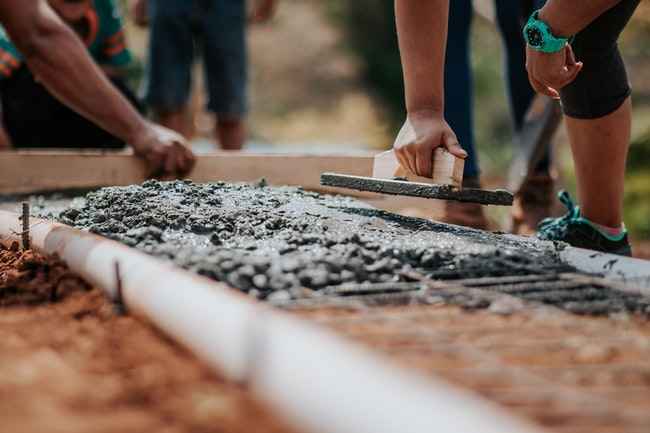Ask the Experts: Renovations & Material Gains
Expert FAQs
Keen to use locally sourced wood or stone for your renovation? Andrew Allen has some useful advice on who can help you to find the right materials.
Andrew Allen is the founder of Allen Architects. He helps clients through their renovation journeys – from feasibility studies and design to planning applications and surveys.
Q1: Who can give us advice on using locally sourced materials for our renovation?
We want to convert our outbuildings into a small gîte complex and would like to use only locally sourced materials such as wood and stone. Is this something an architect on the project might be able to advise on?
Most architects will be familiar with working with the traditional and local building materials of an area. Stone is a traditional material over much of France though the specific type and colour of stone will vary from region to region. Wood also is a familiar material to architects as it has been used throughout history and continues to be used today.
Timber in some regions of France, however, is subject to termite attack and so the way any wood is used in these areas will need particular attention. Your architect should also be able to advise you on where to source these materials or if you are using local artisans they will certainly have this knowledge.
Often stone can be reclaimed from buildings that have been demolished or fallen down and so can have ecological advantages and the same can also apply to wood if you are looking to source reclaimed timber beams, for example. Using local building materials is always a good way to make a conversion or renovation sympathetic to the local region and traditions.
These materials can always be mixed with contemporary materials such as glass or steel to blend in with the locality, offering a modern twist yet still maintaining a traditional character.
Q2: What is the purpose of a soil survey and how is this carried out?
When planning building work, what is the purpose of a soil survey and how is this carried out?
There are two types of soil survey that you are likely to come across in connection with your property in France. These are: An ‘étude de defnition de fliere d’assainissement non collectif’ and an ‘étude géotechnique’.
Étude de defnition de fliere d’assainissement non collectif
The ‘étude de defnition de fliere d’assainissement non collectif’ is carried out in order to install a new septic tank and drainage system. When making a planning application in France and if the property is not connected to mains drainage, you will be required to submit a document demonstrating that any septic tank connected to the property conforms to up-to-date regulations.
If you require a new septic tank then you will need to have this study carried out and submit the resulting documents as a part of the planning application. The study involves taking samples of soil at various depths and at various places on the parcel of land involved. The level of the land will also be taken at various spots and from all of this information a report is compiled which will suggest the most appropriate type of septic tank and drainage system for the property.
Étude géotechnique
The ‘étude géotechnique’ is a more technical and hence generally more expensive study. It involves an investigation into the nature and compressive strengths of the ground in relation to its ability to support a building. Unlike the soil samples in the previous study, which can be taken with a hand auger, the étude géotechnique requires heavy machinery and drills in order to take the samples.
The completed report will show the ability of the ground to support the type of building in question and any special foundation requirements. This type of study is encouraged by insurance companies and architects and can lower insurance premiums. It is advisable if the ground is suspect in some way or if the property has particular point loads.
For example, we have just constructed a house which is supported above the ground on wooden posts and this type of ground study was imperative.

© Rodolfo Quirós at Pexels
Building or Renovating Your French Property?
Whether you’re building an extension, renovating an old farmhouse, or designing a new build property, FrenchEntrée is here to help! Check out our Essential Reading articles for everything you need to know about planning permissions, building regulations, and renovation projects. Or, look through our Local Business Directory to find help from professionals like Andrew Allen for advice and assistance for your building and renovation project.
Lead photo credit : Tools of joiner placed on wooden table © Ono Kosuki at Pexels
Share to: Facebook Twitter LinkedIn Email
More in Building conversion, Building materials, planning application, renovation, Soil survey
Leave a reply
Your email address will not be published. Required fields are marked *





